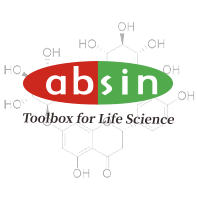Product Details
Product Details
Product Specification
| Usage | 1. Cell preparation: (1) Plate 96-well or 384-well cell culture plates with appropriate density of cells to be tested. A whiteboard is recommended. (2) Prepare the compound to be tested. The appropriate concentration of the compound to be tested is added to the cell plate wells. The concentration of organic solvent in the culture solution is kept below 1-2%. A control group without compound was set up. Continue to cultivate the appropriate time according to the project needs. 2. Cell viability detection: (1) Remove CTF-LTMCell viability test reagent, equilibrated at room temperature for 20 minutes. Gently shake and mix well. (2) Prepare CTF reaction solution: The CTF substrate is 100x, use CTF buffer to prepare 1x reaction solution, mix thoroughly, and mix with the same volume of cells to be detected. (4) Add an equal volume of CTF reaction solution to the wells of the culture plate, shake gently for 20 seconds and mix well, and react at 37 °C in the dark for 60-90 minutes. (5) Read the fluorescence signal on a plate reader, with an excitation wavelength of 380nm and an emission wavelength of 510nm. (6) Continue downstream multiplex analysis as needed. |
|||||||||||||||
| Description | There are many methods to detect cell viability, such as detecting dye exclusion, detecting ATP production, detecting enzyme activity on substrate price reduction, etc. Luciferase assay is widely used and is based on the ability of living cells to produce ATP. Because it is cell detection, sometimes internal reference control is required, which leads to the need for multiplex analysis, that is, the same analysis method is detected at the same time, without interfering with each other, and the detection mechanism is different, so that relevant comparisons can be made to exclude data differences other than experimental factors. Foreign CellTiter Fluor (CTF) products are designed based on this principle. The Company has independently developed and launched a similar Fluorescent Cell Viability Assay Kit (Fluorescent Cell Viability Assay Kit), which has no significant difference in performance from foreign brand products. This product is based on the degradation of polypeptide products by cellular proteases to produce fluorescent signals. When cell membrane integrity is impaired, the protease loses its activity to degrade the substrate. CTF-LTMDifferent from the detection principle of luciferase kit, the detection method is also different. Its detection sensitivity is inferior to that of luciferase method, but it can detect slight cell damage at an earlier stage. The two tests have good compatibility, and multiplex detection can be performed. Product Features: 1. Performance The detection signal, Window, sensitivity and specificity are similar to those of similar products of foreign brands. 2. Compatibility It is compatible with commonly used analytical reagents such as CTG and does not form mutual influence. 3. Features More sensitive to early membrane damage of cells. 4. Convenience "Adding-mixing-incubating-detecting", the whole experimental steps are simple and easy to operate. Product composition: Protease substrate, buffer mixed and filled in 10 mL or 100 mL brown bottles and 2 mL tubes with the following strengths:
|
|||||||||||||||
| General Notes | 1. Reagent dosage: It is not recommended to change the dosage of reaction reagents at will unless strictly verified. If a 96-well reaction plate is used, it is generally recommended to add an equal volume of CTF reaction solution to 50uL culture medium, and then add an equal volume of multiplex detection reaction solution (such as CTG reaction solution) as the CTF reaction solution for subsequent detection. Other reaction plates were adjusted for corresponding volumes. It is recommended that the substrate be divided and the reaction solution is freshly prepared from the substrate stock each time. 2. If necessary, adjust the actual remaining culture fluid volume in the reaction wells of the culture plate to ensure that the total multiplex analysis volume does not exceed 200uL (96-well plate) or 40 uL (384-well culture plate). 3. Plate reading time: After adding reagents and incubating at 37 °C for 30 minutes, plate reading can be performed, but its detection sensitivity is lower than that of incubating at 37 °C for 60 minutes or 90 minutes. |
|||||||||||||||
| Storage Temp. | Store at-20 ℃ and below, protected from light, shelf life is 12 months. |


